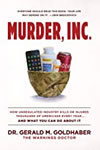All Articles
Accident Investigation & Reconstruction
Hazardous Materials
Accounting
Human Resources
Aerosols - Aerosol Products
Industrial Hygiene and Safety
Aquatics Safety
Jails - Prisons - Correctional Facilities
Arms - Guns - Weapons
Land Mapping - Surveying - Zoning
Attorney Fees
Land Use
Blockchain Information
Law Enforcement
Computers
Legal Issues
Construction
Life Expectancy - Life Care Planning
Criminology
Medicine
Crisis Management
Metallurgy
Damages
Orthotics and Prosthetics
Digital Forensics
OSHA
DNA (Deoxyribonucleic Acid)
Pain Management
Electrical - Electrocution
Plants & Trees
Elevators - Escalator - Automatic Doors
Pools and Spas (Recreational)
Employment
Professional Malpractice
Energy - Utilities
Psychiatry
Engines (Combustion - Diesel)
Public Speaking
Exercise & Fitness
Recreation & Sports
Expert Witnessing
Slip, Trip & Fall
Family Issues
Supply Chain Management
Fires & Explosions
Taxation
Food & Beverage
Terrorism - Homeland Security
Gems & Jewelry
Underwriting
More...

AQUATICS-SAFETY-PAGE ARTICLES MAIN PAGE
. Contact Us if you are interested in having your work published on our website and linked to your Profile(s).
All Articles
Aerosols - Aerosol Products
Human Resources
Alternative Dispute Resolution (ADR)
Hydrology
Anger Management & Related Issues
Industrial Hygiene and Safety
Archaeology - Archeology
Injury
Arms - Guns - Weapons
Insurance Coverage Analysis
Automotive - Vehicular
Intellectual Property
Banking
Linguistics
Blockchain Information
Manufacturing
Business Management
Mediation
Child Witch Phenomenon
Medicine
Counseling
Mining
Criminology
Obstetrics - Gynecology (OBGYN)
Digital / Crypto Currency
Orthotics and Prosthetics
Discovery & Electronic Discovery
Patents
Domestic Violence
Pharmaceuticals
Electrical - Electrocution
Pharmacy & Pharmacology
Energy - Utilities
Politics
Enterprise Resource Planning (ERP)
Premises Liability
Exercise & Fitness
Professional Skills
Family Issues
Psychology
Foot / Ankle Surgery
Recreation & Sports
Forensic Psychiatry
Speech-Language Pathology
Forgery & Fraud
Supply Chain Management
Gems & Jewelry
Taxation
Healthcare
Toxicology
More...
Featured Articles
There are no active articles here at this time. Please use the search bar, try another category, or contact us if you would like to contribute an article.
This Article is unavailable. Contact Us
Search articles by title, description, author etc.
Sort Featured Articles
Featured resources
The Piercing Bible
by Elayne Angel
The Miracle Within
by Jack McCubbin, MD
Murder, Inc.: How Unregulated...
by Dr. Gerald Goldhaber
Follow us










